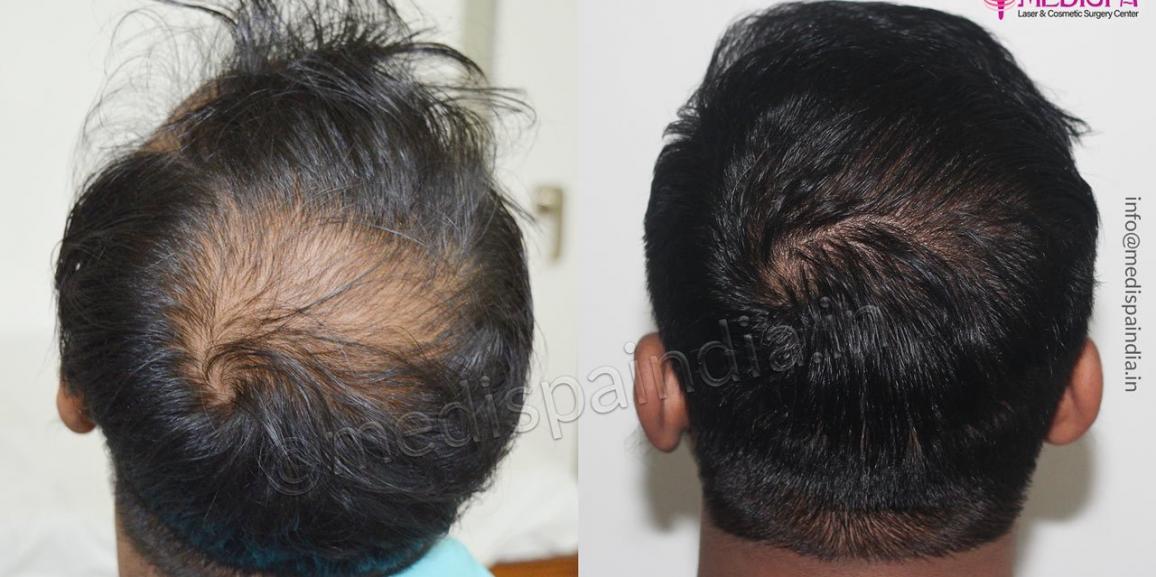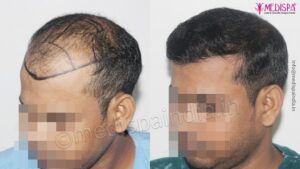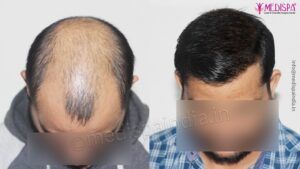
Since hair is one of the most important cosmetic enhancements for one’s beauty and appearance, experiencing hair loss during that time can be very upsetting. Because they don’t want to go through that upsetting time again, people who decide to have a hair transplant frequently worry about the stability of the results over time.
Many people still have a lot of preconceived ideas and misconceptions about getting a hair transplant, which deters them from actually doing it. People frequently worry about the side effects of the hair transplant due to their ignorance of the entire procedure.
Let’s first be clear that a hair transplant is a restorative procedure that involves moving hair from the donor area—the back and sides of the head—to the recipient area in order to clear up any misunderstandings. It is not a regeneration process, and the bald area cannot grow new hair follicles as a result. It takes a great deal of expertise and knowledge to perform a hair transplant in the best, most natural, and long-lasting way possible. Strong decision-making regarding the technique to use and skilled surgical abilities are required for a hair transplant to be successful.
During a hair transplant procedure, hair is transferred from the donor area—the back and sides of the head—to the recipient area. There is no doubt that the strategy favors restoration over regeneration. A great deal of expertise and experience are needed to perform a hair transplant and achieve the best, most natural-looking, and long-lasting results. A successful hair transplant outcome depends on having the right surgical skills and making wise decisions.
The idea that a hair transplant is a regenerative procedure is wrong. In this completely reparative procedure, the hair follicles are simply moved to the desired bald spot. Hair transplant is reportedly one procedure that could show results right away. In actuality, you must wait several months before your bald heads start to benefit, but the wait is worthwhile.
Techniques used to perform the hair transplant
Techniques: FUE and FUT hair transplant are the two main techniques used to perform the hair transplant procedure.
FUT hair transplant: In this procedure, a strip from the donor area is removed and divided into sections to harvest each individual hair graft. The chosen bald area is then implanted with each hair graft. The donor area is being repaired at the same time using a cutting-edge method called “Trichophytic closure.” The procedure can generate between 3000 and 3500 hair grafts, making it an effective way to treat severe baldness.
FUE hair transplant: Using a punch inserted into the skin, each hair graft is removed individually in this method. The chosen bald area is then treated to the transplanted hair grafts. The method could generate between 2000 and 2500 hair grafts.
Approach to treat high grade baldness with hair transplant?
Combination therapy is the most efficient method for treating high grade baldness. Let’s look at the benefits of this approach for very severe baldness.
- Because the combination procedure makes it possible to harvest more grafts, it is preferred for use in cases of severe baldness.
- The combination method has the greatest additional benefit of preserving follicular grafts, despite removing more grafts overall. The long-term advantages of the method are thus realized, which are only partially feasible with FUT hair transplantation. It enables up to three additional sittings in the future because the grafts are kept. The donor area would be overharvested and lose density if the FUE procedure was performed in multiple sittings.
- The combination therapy reduces the likelihood of scarring after healing, improving the cosmetic outcome. The donor site is sutured during the FUT hair transplant procedure using the trichopytic closure technique, which leaves almost no visible scarring. The FUE hair transplant method uses remote graft harvesting to reduce scarring and make it almost undetectable. Several follicular grafts harvested using the FUE technique are planted around the scar in order to completely cover the linear scar caused by the FUT procedure.
- In the combination method, a very small strip is removed, leaving about 2 cm of strip below it, and then grafts are removed using the FUE method from the strip that was left out. The advantage of using this 2 cm leftover strip for subsequent sittings in cases of severe baldness and progressive hair loss is thus offered.
- FUT, which is primarily used in the combination procedure, has the advantage of having a damage rate to follicular grafts of less than 1% when performed by skilled hands. The strip is cut during the FUT procedure under high magnification to allow for clear visualization and protect the follicular grafts. It is a blind procedure that could cause more harm to the hair follicles than the FUE technique, which extracts the graft by digging a punch into the scalp with a rough idea.
- You will unquestionably get natural results when combination technique is applied by skilled hands with artistic sensibility. A single graft obtained using either procedure would not be able to achieve the same fantastic hair transplant results in cases of extreme baldness. Single grafts made using the FUT technique are preferred for planting in the frontal and temporal triangles. Additionally, a number of thick grafts that were extracted using the FUE method are inserted in the backline.
- By allowing high density hair transplantation in a single session, the combination approach saves time. With this technique, the patient may achieve their desire for a denser appearance in just one visit.





